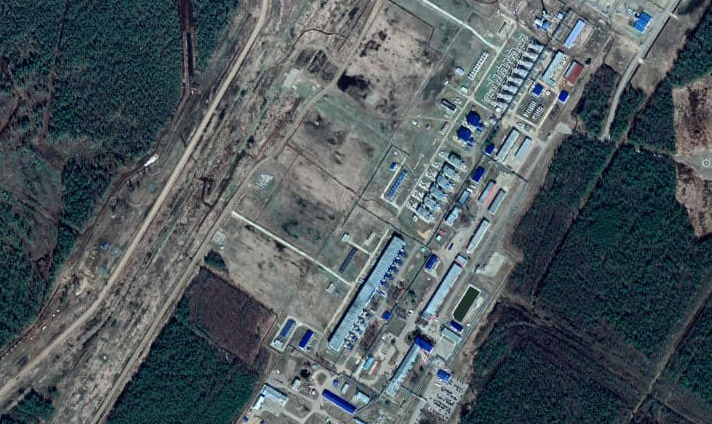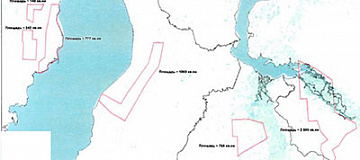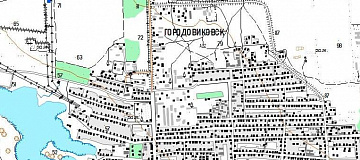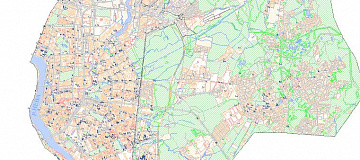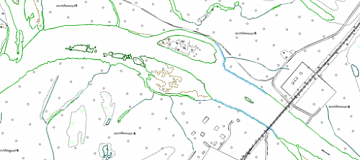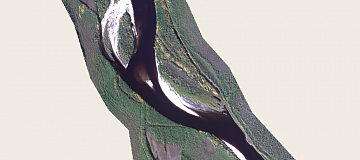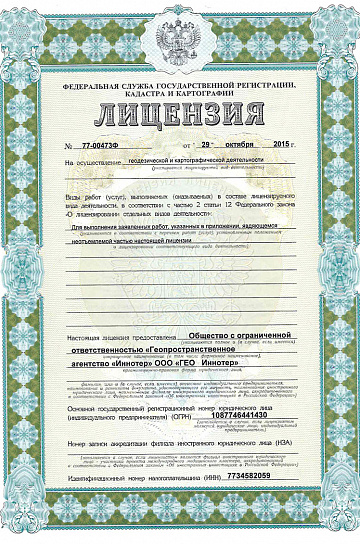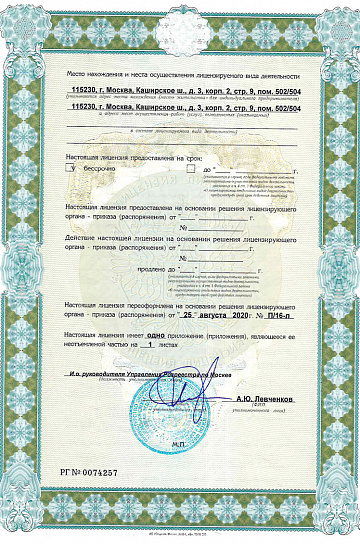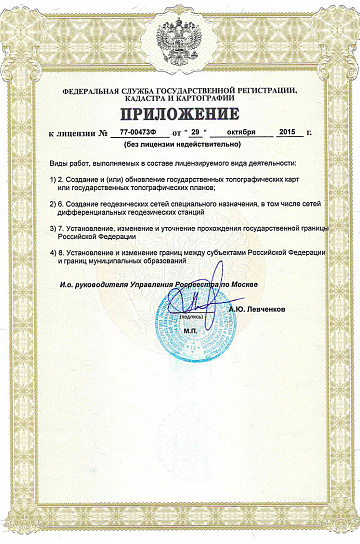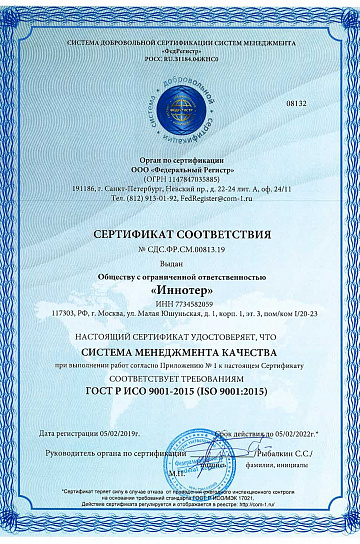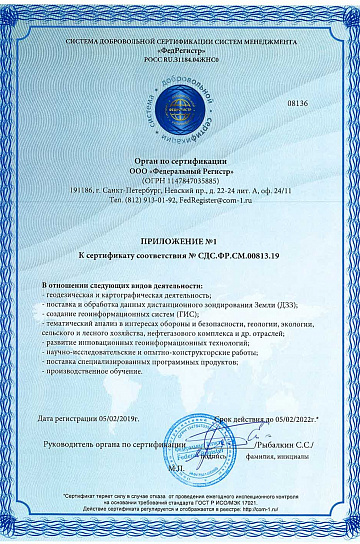Orthoimagery (Orthorectification) is a image of the terrain in an orthogonal projection, defined by a coordinate system and a desired scale. It is obtained by orthorectifying aerial or satellite images using control points, ground control points (GCPs), or rational polynomial coefficients (RPCs) to remove distortions caused by image acquisition conditions, camera equipment, image tilt angles, and terrain relief. The orthorectified images are then stitched together and cut into orthophotoplanes based on predefined or custom sheets. An orthophotoplan captures detailed information about the real-world features on the Earth's surface.

You can order from us
Prices for services
Cost of Orthoimagery (Orthorectification):
| Scale of Orthoimagery (Orthorectification) | Satellite Imagery | Aerial imagery |
UAV/Drone
|
|---|---|---|---|
|
1:500 and 1:1000 |
- |
- |
From 1 km2 |
|
1:2000 and 1:5000 |
- |
From 25 km2 from 200,000 ₽ |
From 5 km2 from 100,000 ₽ |
|
1:10000 |
From 25 km2 |
From 50 km2 from 200,000 ₽ |
- |
|
1:25000 and 1:100000 |
From 100 km2 from $300 |
- |
- |
Cost of Creating Orthophotomaps from Client-Supplied Data (Processing per 1 km2):
|
Scale of Orthophotomap Creation |
Satellite Imagery |
Aerial imagery |
UAV/Drone |
|---|---|---|---|
|
1:500 and 1:1000 |
- |
- |
from 1000 rubles |
|
1:2000 and 1:5000 |
- |
from 100 rubles |
from 1000 rubles |
|
1:10000 |
from 0.5 $ |
The cost of execution is calculated on an individual basis, taking into account a specific of task.
After receiving the task description, we calculate the cost and send you a commercial offer.
Period of execution
The completion time is from 1 working day.
The timeframe for creating orthoimagery depends on:
- the area of the area of interest (service area);
- the type of imagery (satellite imagery, aerial imagery, UAV/drone imagery);
- the number of images;
- the spatial resolution of the images;
- the complexity of the terrain;
- the seasonality of the project;
- the amount of advance payment;
- whether the remote sensing data needs to be procured or if the materials are provided by the client;
- and other factors.

Fig. Ortho creation from UAV images for scale 1:2000
How to place an order:
Need for consultation?
Fill the form and we will contact you
Stages of service provision
The result of the provision of services
Ready orthophotoplan or orthomosaic of the specified type and in the specified format.
Requirements for Source Data
In accordance with regulatory documents for the creation of orthophotoplans, the following requirements are imposed on the accuracy and detail of the source images, plan-altitude basis, and digital terrain model.
| Name of Requirements | Requirement Values for Scales | ||||||
|---|---|---|---|---|---|---|---|
| 1:500 | 1:1000 | 1:2000 | 1:5000 | 1:10000 | 1:25000 | 1:50000 | |
|
GCP Accuracy: - Planar, m - Vertical, m |
0.14 0.10 |
0.28 0.10 |
0.56 0.10 |
1.40 0.21 |
2.80 0.21 |
7.00 0.52 |
14.00 1.04 |
|
Digital Terrain Model Accuracy, Vertical, m |
0.10 |
0.10 |
0.10 |
0.20 |
0.20 |
1.00 |
2.00 |
|
Contours Accuracy: - Planar, m; - Vertical, m |
0.35 0.18 |
0.70 0.18 |
1.40 0.18 |
3.50 0.35 |
7.00 0.35 |
17.50 0.88 |
35.00 3.76 |
|
Allowable Resolution on the Ground Lm, (spatial resolution of the images), m |
0,02 |
0,05 |
0,10 |
0,25 |
0,50 |
1,25 |
2,50 |
Related services











Completed projects

Aerophotogeodesist, work experience 58 years, Education - Moscow Institute of Geodesy, Aerial Survey and Cartography (MIIGAiK)
Customers
FAQ
- Location of the object of interest (coordinates, name of the district, region, shapefile, etc.);
- Requirements for the imaging period (the period for which archival data can be used or the need for a new survey);
- Determination of the required scale and accuracy, purposes of using orthophotoplans.
- Location of the object of interest (coordinates, district name, region, shapefile, etc.);
- Requirements for the imaging period (the time frame for which archival data can be used or the need for a new survey);
- Determination of the required scale and accuracy, objectives of using orthophotoplans.












